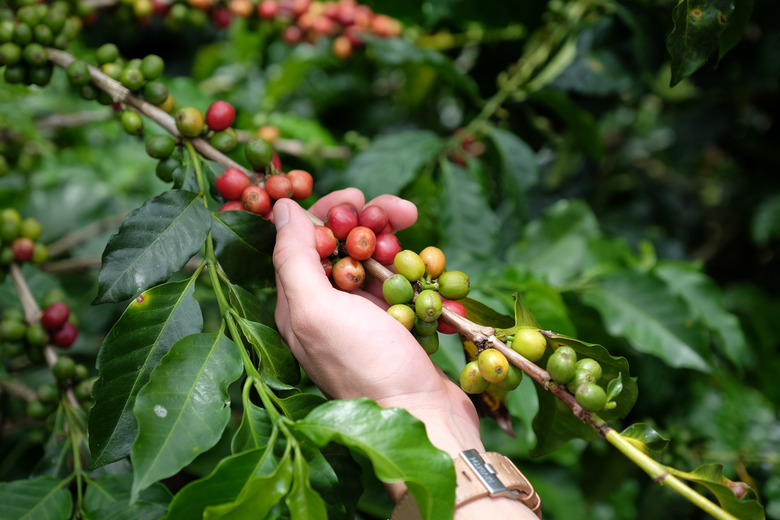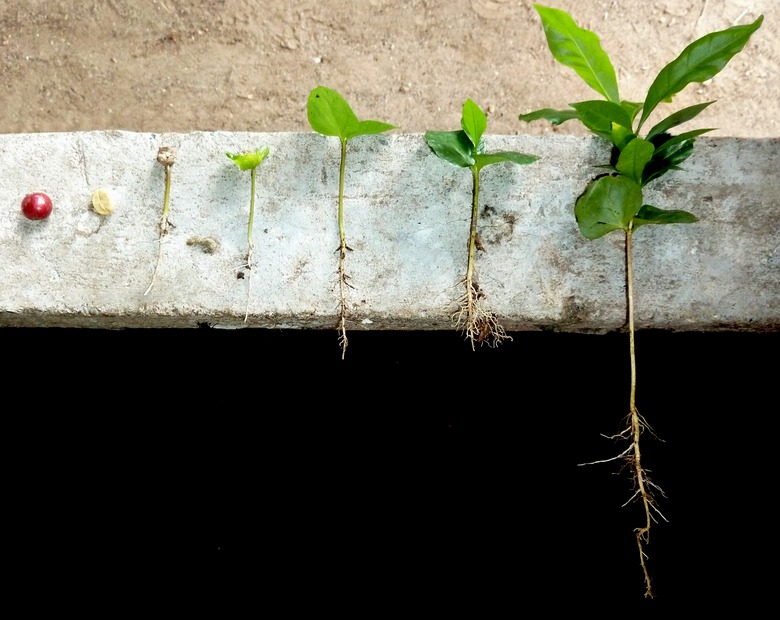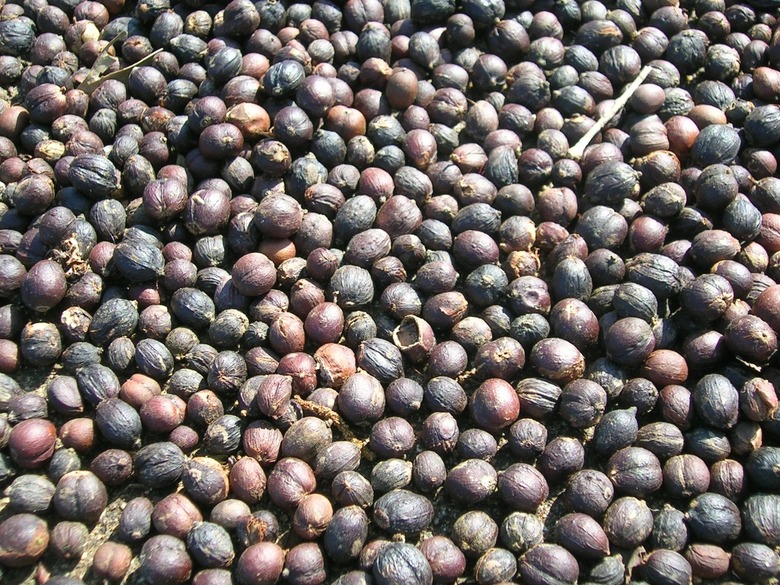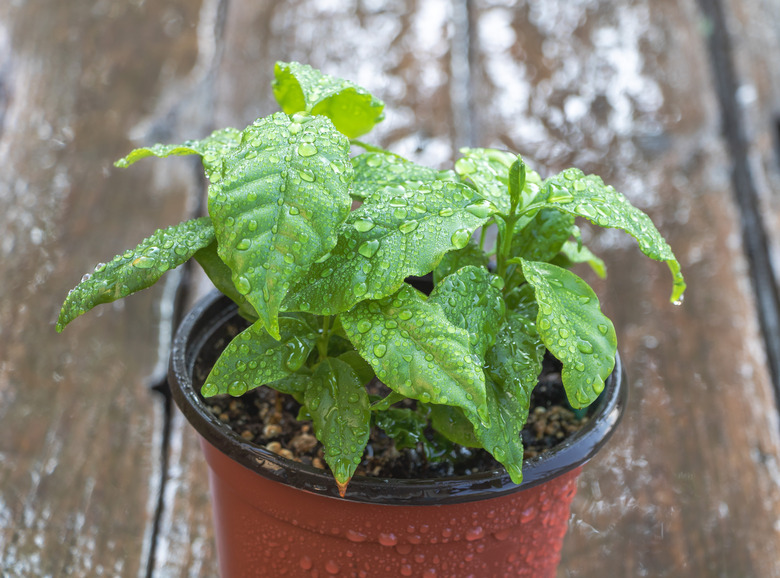How To Grow Coffee Beans
Where Can You Grow a Coffee Plant?
The coffee tree, with its shiny red berries (actually drupes) and equally shimmering, deep green leaves, shows off its bounty best when planted in what is called the "bean belt," that area of the world along the equator between the Tropic of Capricorn and the Tropic of Cancer, identified in the U.S. as hardiness zone 10.
It is possible to grow coffee (Coffea, spp.) in areas somewhat colder than that, but not much—parts of Florida or Texas, for instance, and in that tropical jewel in the U.S.'s arsenal, Hawaii, which is perfectly situated to nurture crops like coffee.
If you live in an area too cold to grow a coffee tree, you can experiment by growing it in a greenhouse or indoors as a houseplant. Just don't expect to harvest beans, as your chances will be hit-or-miss.
How to Grow a Coffee Plant
The term "coffee bean" is a bit of a misnomer, referring to the seed of the red fruit produced by a coffee tree. **This red fruit resembles cherries and is called a coffee cherry in the industry, but it's a drupe,** which is a fleshy fruit that has a seed, usually a single seed, but in coffee's case, two seeds.
A coffee plant's seeds are pyrenes, commonly called pits or stones, but the term "fragrant coffee pits" doesn't stand up to "beans" when you're prepping your morning joe.
But let's start at the beginning.
Prepare the Beans for Planting
1. Pick ripe red cherries, remove the outer layer of pulp and wash them. 2. Soak the beans in clean water for 24 hours; they will naturally ferment, which helps loosen the layer of slimy mucilage surrounding the beans. 3. Wash off this mucilage with fresh water. Then, discard any floating beans, as those that are viable will sink to the bottom of a container. 4. Dry them on screens outdoors for about 10 days. At this point, they are ready to plant.
Tip
If you plan to sow the beans immediately, you can omit the drying step.
Sow the Beans
Find some patience because coffee bean germination can take from 2.5 to 6 months, depending on the freshness of the bean—the fresher, the faster the germination, if you can call 10 weeks fast. Here's the process:
1. Soak the seeds for 24 hours if they were previously dried. 2. Sow the beans in damp sand or drained, wet vermiculite and water regularly.
3. Wait until the seed germinates. Then, remove it from its germination bed and place it flat-side down, 1 inch deep, in a lightweight and porous soil mixture. 4. Maintain even moisture, i.e. never let it dry out and never allow water to accumulate in the soil. 5. Transplant into high-nitrogen and low-pH soil if the seedling outgrows its pot.
At this point, you have a healthy coffee seedling.
Tip
Just in case you wondered, no, you can't germinate roasted coffee beans. Only fresh green seeds will sprout.
Plant the Coffee Seedling in the Landscape
If you live within the so-called "bean belt," choose a location that receives some afternoon shade and offers some protection from the wind. Ideally, temps should be between 59 and 77°F. Coffee doesn't like it hot; instead, it thrives in moderate, non-freezing temperatures where it can enjoy some misty rain during its growing season and dry weather during harvest.
A coffee tree typically starts blooming three to five years after planting, with full bearing age expected after six to eight years. Coffee trees can be productive for 30 to 50 years but may live to be 100 years old.
Growing Coffee as a Houseplant
In climates too cold to be conducive to coffee, plant your coffee tree in a large container and maintain it as a houseplant. Ensure well-draining soil with a slightly acidic pH and regular moisture, as is required of field-grown coffee.
Provide a well-lit location inside, preferably next to a south-facing window, and move them outdoors in warm weather, ideally to a shaded patio. Fertilize regularly, as coffee is a heavy feeder. In winter, cut back on fertilizer and water.
Tip
To maintain a bushy form, pinch back container plants. Repot the coffee tree annually or every two years to refresh the soil or to support growth.
Because it's difficult to simulate the perfect conditions indoors, your coffee tree may flower but may not produce fruit that you can harvest, or it may not flower at all. It may produce cherries, but they may not be of sufficiently high quality.
Or, it's possible you will indeed get those beautiful bright, red cherries that you can harvest for beans!
References
- University of Wisconsin, Madison: Coffee, Coffea spp.
- University of Kentucky: Coffee
- Ohio State University: The Bean Belt
- University of Florida IFAS Extension: Coffee Growing in the Florida Home Landscape
- Coffee Research Institute: Coffee Growing at Home
- University of Hawaii College of Tropical Agriculture and Human Resources: Growing Coffee in Hawaii



